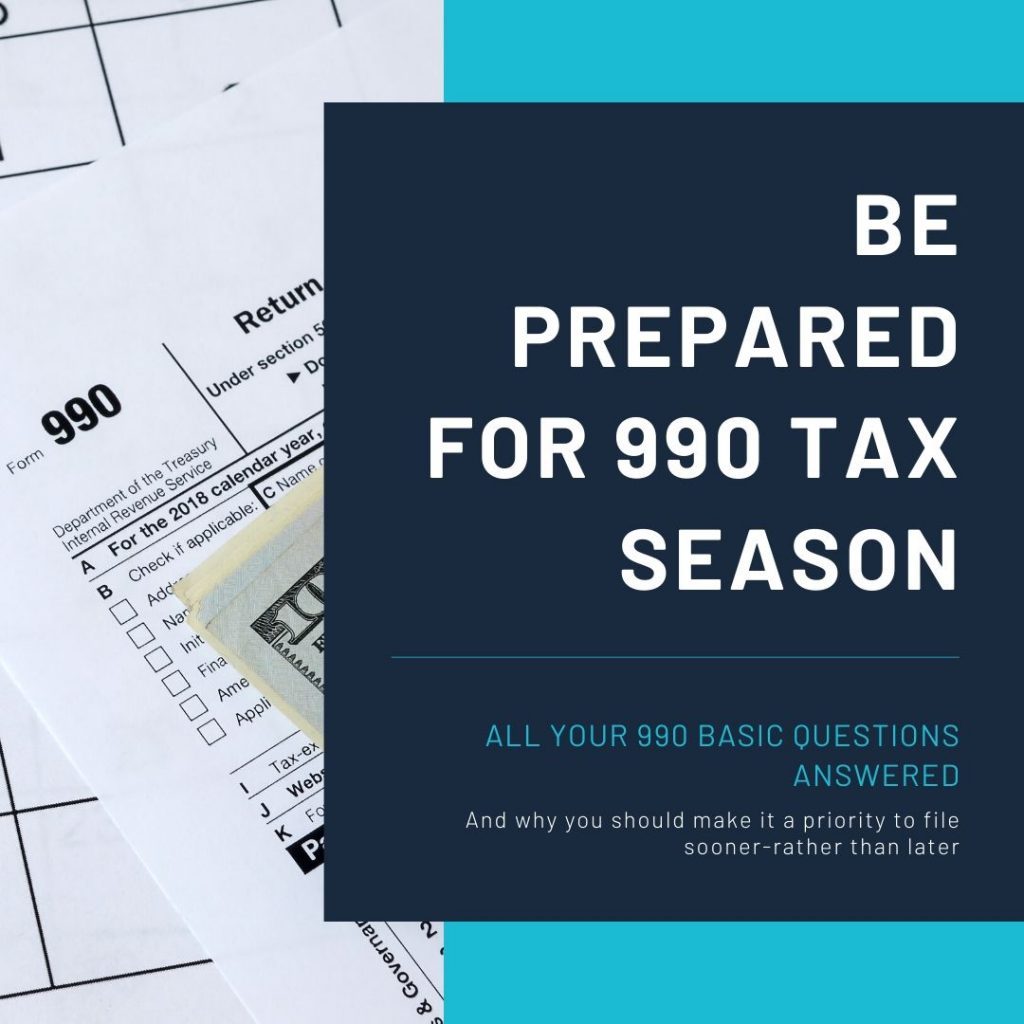Last updated on: May 20, 2025
Understanding IRS 990 Instructions and the Form 990 Due Date
It’s that time of year again! Everyone is gathering their financial documents and preparing for their annual filing with the IRS. If you’re running a tax-exempt nonprofit organization, however, Form 990 should be on your to-do list. There is no way of getting around it, and attempting to do so can result in losing your tax exemption. To avoid losing the status you worked so hard to obtain, it’s best to remain in compliance with the IRS and follow the exact IRS 990 instructions to ensure it’s prepared and filed accordingly.
But what exactly is Form 990? Why is there more than one? Who exactly should file a 990, and which kind of 990, at that? When is the Form 990 due date?
You can answer these not-so-common questions yourselves if you’re familiar with our IRS 990 instructions. For the many who are not, including newly awarded tax-exempt nonprofit organizations, it’s best to know everything you can about Form 990 due date to avoid missing deadlines and incurring hefty penalties.
Here are five of the most important things you should know about Form 990:
- WHAT IS THE FORM 990?
Form 990 is a nonprofit’s version of a corporate tax return. Moreover, it’s the document that certain tax-exempt organizations must file each year with the IRS. The 990, which is displayed publicly on the IRS website, enables regulators, funders, journalists, and others to measure a nonprofit’s performance. For example, interested donors and grant awardees can look up a nonprofit’s 990 to view their income and expenses and gauge whether the nonprofit is a venture they would like to contribute to.This is why it is imperative to make sure you follow IRS 990 instructions exactly.
- WHO MUST FILE FORM 990, AND WHICH KIND?
Most tax-exempt organizations are expected to file by the Form 990 due date. Specifically, this includes schools, health and welfare organizations, business leagues, civic associations, museums, private foundations, and a myriad of other nonprofit organizations. The type of 990 an organization will file depends on the organization itself and how they are structured as a nonprofit.Private foundations will need to file Form 990-PF. Larger nonprofits with gross receipts of more than $50,000 must file Form 990 or Form 990-EZ. Smaller nonprofits with gross receipts of less than $50,000 must file Form 990-N online, though we strongly suggest smaller nonprofits filing a Form 990 EZ (Voluntary) if they are actively pursuing grants or other fundraising initiatives. Make sure you’re following the correct IRS 990 instructions to ensure you don’t file unnecessary or incorrect forms.
- WHO DOES NOT HAVE TO FILE FORM 990?
Many nonprofit organizations must file Form 990, though some are exempt from doing so. Typically, the organizations that are exempt from filing 990s are churches, faith-based organizations, state institutions, and nonprofit subsidiaries. These organizations are, of course, welcome to file a 990 voluntarily, yet they are not required to by the IRS. If you think your nonprofit falls into one of the 990 exempt categories but aren’t sure, you can always double-check the exact IRS 990 instructions on the IRS website. - WHEN IS THE FORM 990 DUE DATE?
You must file your 990, 990-EZ, 990-N, or 990-PF by the 15th day of the 5th month after your accounting period ends. If your fiscal year aligns with the calendar year and ends on December 31st, then your Form 990 due date is on May 15th of the following year. Should you run into unforeseen setbacks that will delay your filing, an extension can be arranged with the IRS. Despite having the option of an extension, we highly recommend filing on time to avoid any mistakes from rushing the 990. - WHAT IS THE MOST COMMON 990 MISTAKE?
The most common mistake when preparing and filing Form 990 is failing to complete Schedule A. This section of the IRS 990 instructions requires charities and certain types of charitable trusts to list the salaries and benefits awarded to top officials and to top-paid independent contractors. This part of the form also focuses on advocacy activity and contains additional questions not covered on Form 990 itself. Schedule A is crucial, and should not be overlooked when preparing your Form 990.To avoid making mistakes or questioning yourself on whether you are filing the correct 990 or not, please contact BryteBridge Nonprofit Solutions today. Our nonprofit specialists are experienced and ready to guide you through IRS 990 instructions as easily and stress-free as possible. Contact us today and get started!
Make sure you check out our 990 Evaluation Tool to see what the best option is for you!



